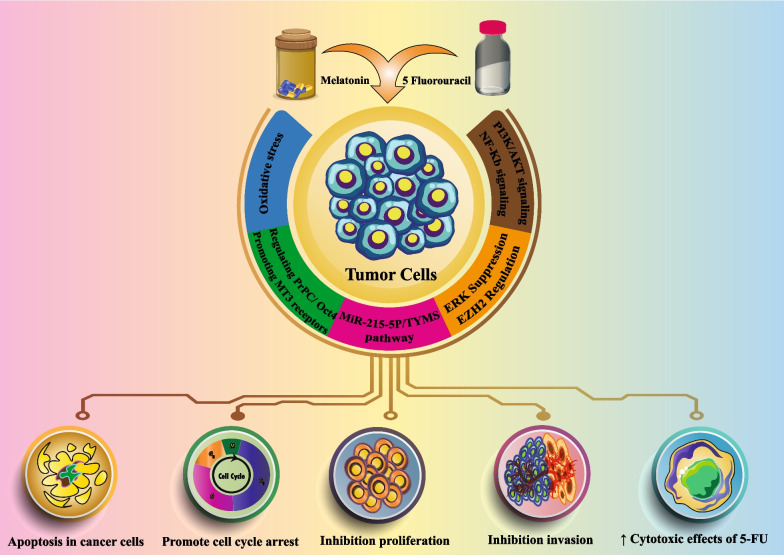- Record: found
- Abstract: found
- Article: found
Melatonin and 5-fluorouracil combination chemotherapy: opportunities and efficacy in cancer therapy

Read this article at
Abstract
Combined chemotherapy is a treatment method based on the simultaneous use of two or more therapeutic agents; it is frequently necessary to produce a more effective treatment for cancer patients. Such combined treatments often improve the outcomes over that of the monotherapy approach, as the drugs synergistically target critical cell signaling pathways or work independently at different oncostatic sites. A better prognosis has been reported in patients treated with combination therapy than in patients treated with single drug chemotherapy. In recent decades, 5-fluorouracil (5-FU) has become one of the most widely used chemotherapy agents in cancer treatment. This medication, which is soluble in water, is used as the first line of anti-neoplastic agent in the treatment of several cancer types including breast, head and neck, stomach and colon cancer. Within the last three decades, many studies have investigated melatonin as an anti-cancer agent; this molecule exhibits various functions in controlling the behavior of cancer cells, such as inhibiting cell growth, inducing apoptosis, and inhibiting invasion. The aim of this review is to comprehensively evaluate the role of melatonin as a complementary agent with 5-FU-based chemotherapy for cancers. Additionally, we identify the potential common signaling pathways by which melatonin and 5-FU interact to enhance the efficacy of the combined therapy.
Related collections
Most cited references194
- Record: found
- Abstract: found
- Article: not found
5-fluorouracil: mechanisms of action and clinical strategies.

- Record: found
- Abstract: found
- Article: found
Development of therapeutic antibodies for the treatment of diseases
- Record: found
- Abstract: found
- Article: not found
